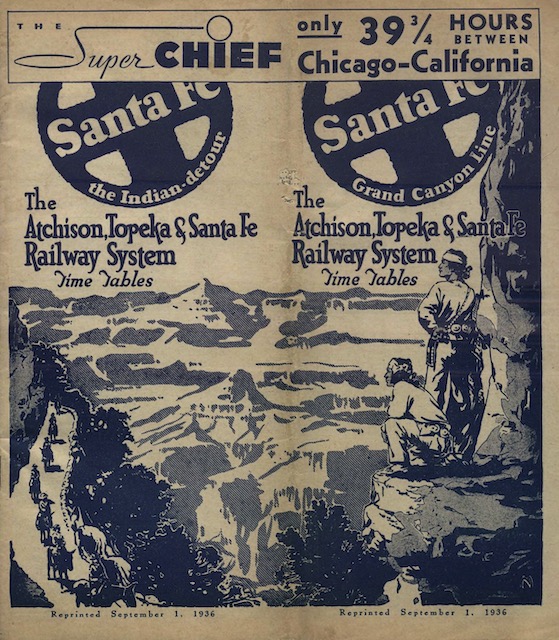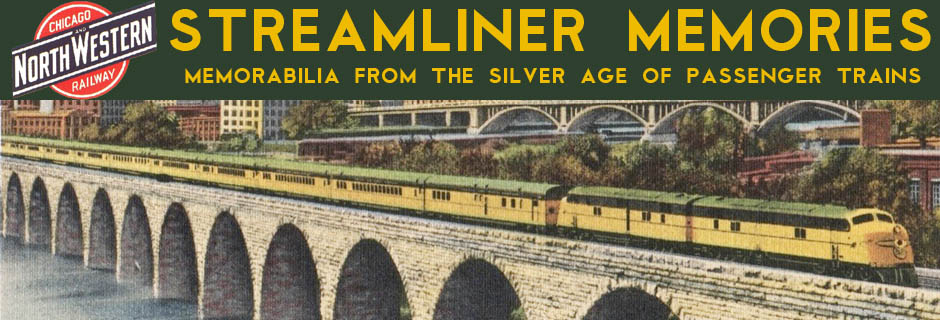The new Scout “is extremely fast,” says the full-page ad on the back cover of this timetable, taking “less than 61 hours en route” from Chicago to Los Angeles. Considering that the front cover of the timetable points out that the Super Chief took less than 40 hours to make the same trip, 61 hours hardly seems “extremely fast.”
 Click image to download a 38.6-MB PDF of this 48-page timetable.
Click image to download a 38.6-MB PDF of this 48-page timetable.
The Scout, which offered coaches and tourist sleepers, was aimed at “those who must budget expense carefully,” the ad observes. Among the amenities listed for the train were “free drinking cups,” suggesting that the ad writers were stretching to find any amenities at all.
Among the amenities not listed in the ad were lounge or dining cars. Instead, the ad noted, passengers could enjoy “delicious Fred Harvey meals, served during restful meal stops at attractive dining stations.” No wonder it was so slow.
The equipment listings inside reveal that Santa Fe’s three main transcontinental trains — the Super Chief, Chief, California Limited — all had diners for the full length of their routes. A fourth train, the Grand Canyon, had a diner the full distance westbound but only from Los Angeles to Shopton, Iowa eastbound. The train left Shopton at 1 am and arrived in Chicago at 6:45 am so few people would have used the diner anyway.
The Navajo, which went via Amarillo and Belen instead of Raton Pass and Albuquerque, only had diners on the Chicago-Kansas City and Belen-Brownwood. The Scout wasn’t entirely bereft of dining car service, as the diner from the eastbound Grand Canyon was added to the Scout at Shopton. Since the Scout arrived in Chicago at 7:50 am, a diner might have attracted a few more customers than on the Grand Canyon. Many of the customers were probably people who boarded the train in Kansas City at 9 pm the night before.
